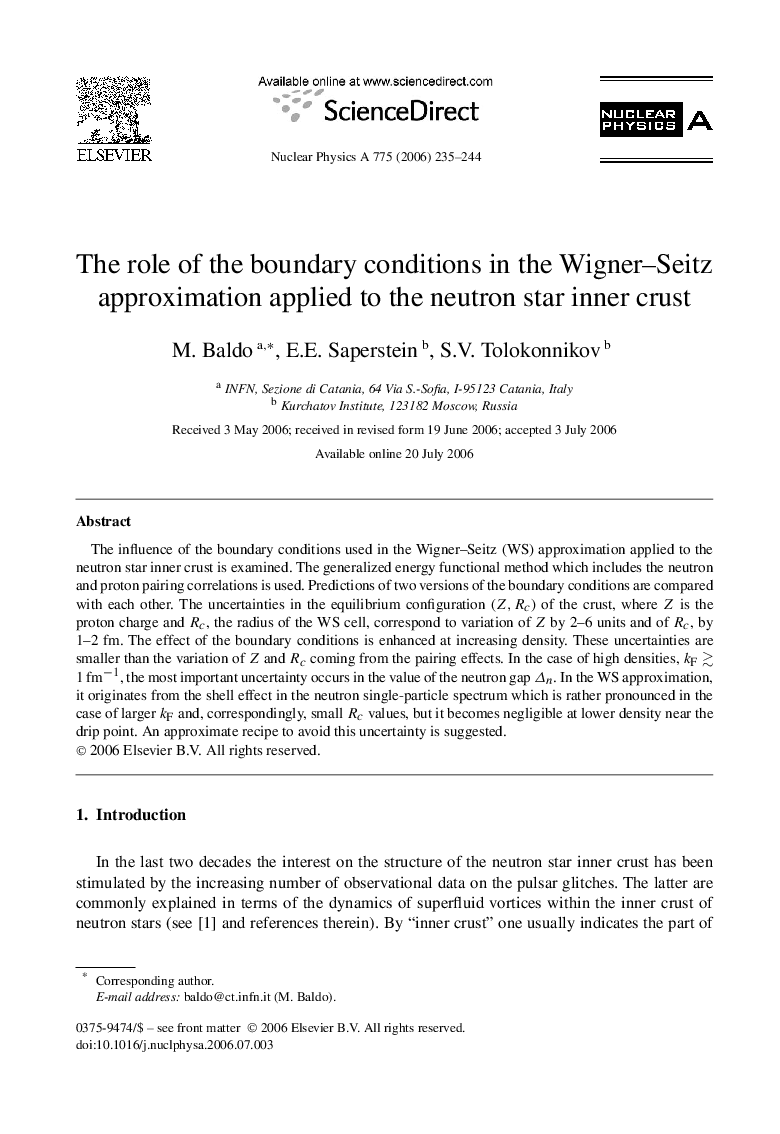| Article ID | Journal | Published Year | Pages | File Type |
|---|---|---|---|---|
| 1837995 | Nuclear Physics A | 2006 | 10 Pages |
The influence of the boundary conditions used in the Wigner–Seitz (WS) approximation applied to the neutron star inner crust is examined. The generalized energy functional method which includes the neutron and proton pairing correlations is used. Predictions of two versions of the boundary conditions are compared with each other. The uncertainties in the equilibrium configuration (Z,Rc) of the crust, where Z is the proton charge and Rc, the radius of the WS cell, correspond to variation of Z by 2–6 units and of Rc, by 1–2 fm. The effect of the boundary conditions is enhanced at increasing density. These uncertainties are smaller than the variation of Z and Rc coming from the pairing effects. In the case of high densities, , the most important uncertainty occurs in the value of the neutron gap Δn. In the WS approximation, it originates from the shell effect in the neutron single-particle spectrum which is rather pronounced in the case of larger kF and, correspondingly, small Rc values, but it becomes negligible at lower density near the drip point. An approximate recipe to avoid this uncertainty is suggested.
